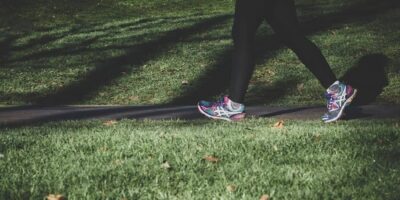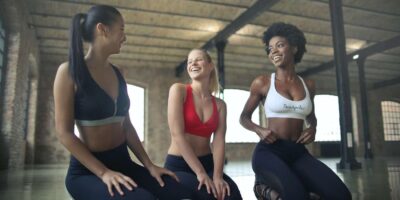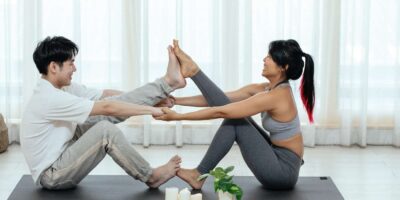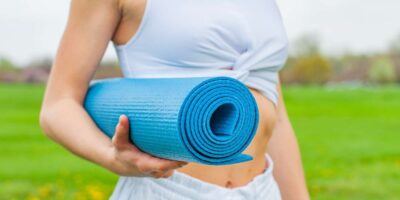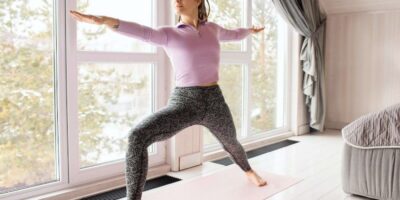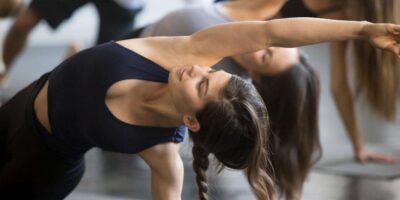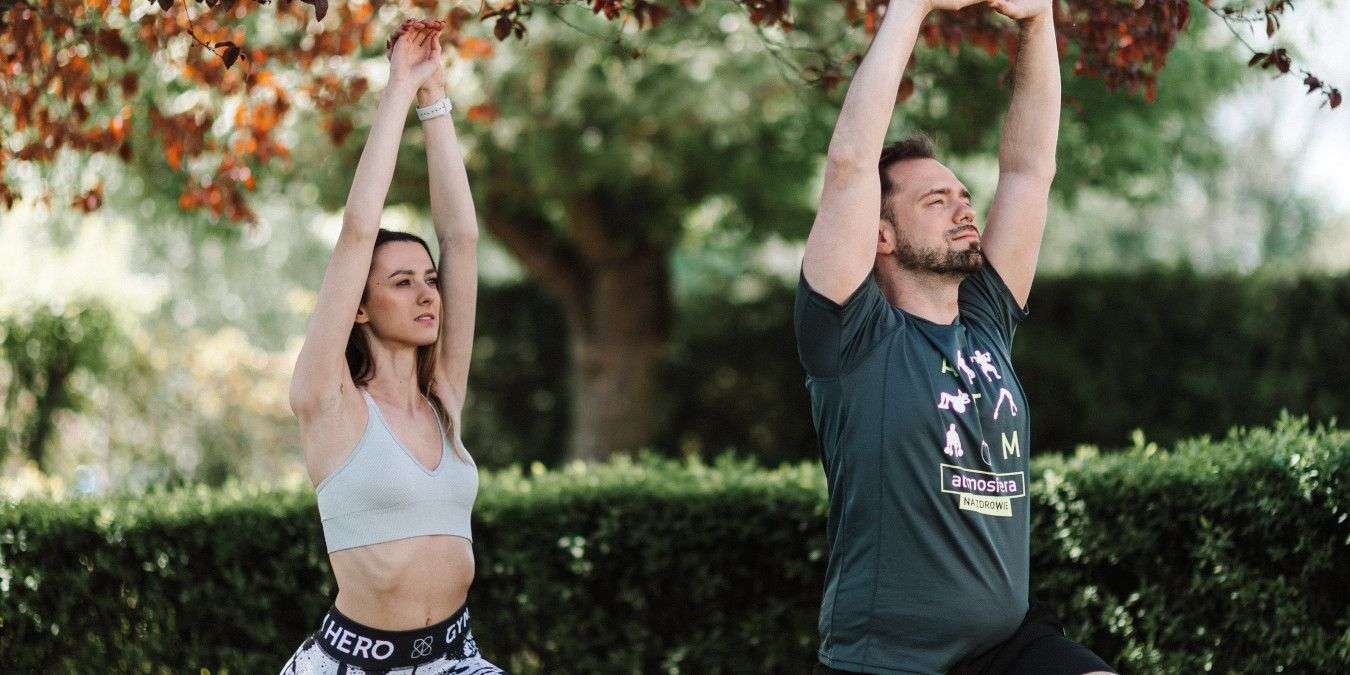
Yoga can be beneficial for many reasons. However, building up the flexibility needed to perform many yoga poses takes time. Therefore, those who are just starting out on their yoga journey should start with yoga poses for beginners.
As you’ll see, the 12 yoga poses listed below are beginner-friendly yet still beneficial in many ways. They’re the perfect way to get started with the art of yoga, and you can figure out most of them with very little instruction.
1. Easy Pose (Sukhasana)
As the name implies, Sukhasana (or Easy Pose) is one of the simplest yoga poses for beginners. Although the pose is primarily designed to relax and connect with your breath, it can still benefit many body parts. Sukhasana improves posture and spinal alignment by stretching your spine, hips, and thighs. It also strengthens your back muscles in the process. Furthermore, this pose encourages mindfulness and meditation, relieves stress, and naturally eases anxiety.
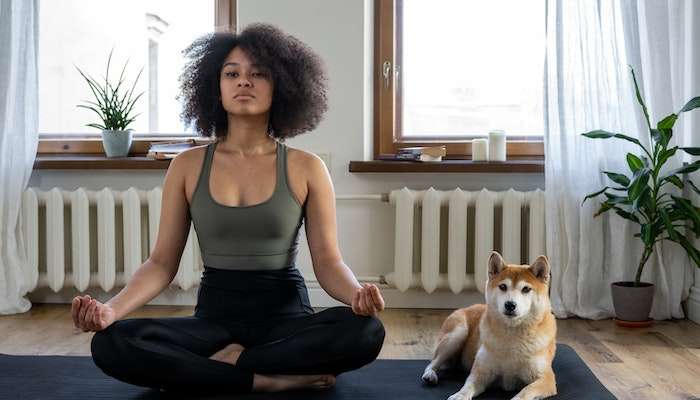
To perform Sukhasana, simply:
- Sit on the floor with your legs crossed.
- Place your hands on your knees, palms facing up.
- Keep your back straight and shoulders relaxed.
- Close your eyes and focus on your breath.
2. Corpse Pose (Shavasana)
Shavasana, or Corpse Pose, is another profoundly relaxing beginner yoga pose you can perform regardless of your flexibility. This pose provides rest and recovery for the entire body, so many people use it at the end of their daily yoga practice. What’s more, many yogis say this pose is a great way to enhance bodily awareness and increase concentration. Some people even use Shavasana to promote healthy sleep and ward off insomnia.
To perform the Corpse Pose:
- Lie flat on your back with arms at your sides.
- Legs should be extended, feet hip-width apart.
- Close your eyes and relax every muscle.
- Breathe deeply and let go of tension.
3. Child’s Pose (Balasana)
A list of yoga poses for beginners would be missing a critical yoga staple if it didn’t include Child’s Pose (Balasana). This pose releases back, shoulder, and chest tension, is easy to transition in and out of, and strengthens the spine and neck. Furthermore, many people use Child’s Pose to aid digestion or as a natural way to ease symptoms of headaches, migraines, and PMS. However, individuals with knee and hip injuries should use caution when performing this pose.
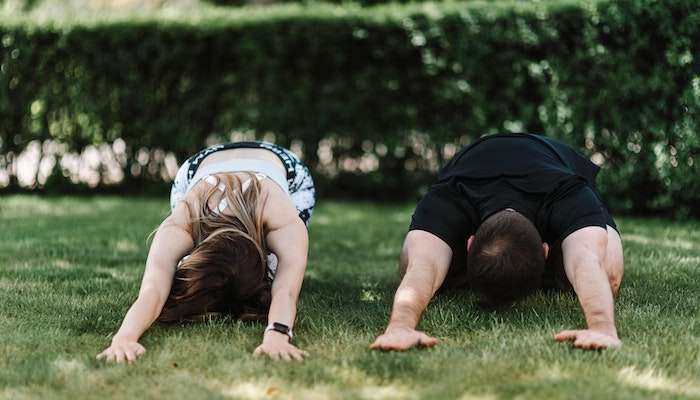
To place yourself into Child’s Pose:
- Kneel on the floor with your big toes touching.
- Sit back on your heels and stretch your arms forward.
- Rest your forehead on the mat.
- Breathe deeply and relax in this position.
4. Downward Facing Dog (Adho Mukha Svanasana)
Adho Mukha Svanasana (Downward Facing Dog) is one of those beginner yoga poses that looks much harder than it actually is. It’s a great way to engage your entire body and enhance circulation. Because of all that Downward Facing Dog involves, the pose stretches your calves, hamstrings, spine, and shoulders. It’s also great for core strengthening, which many basic home exercises neglect.
Compared to some other yoga poses for beginners, the Downward Facing Dog can easily be modified for those who need it. For example, you can modify the pose with slightly bent knees to relieve the pressure on your shoulders or knees. You can also use a yoga block or wedge to help with wrist pain and soreness.
To perform Child’s Pose:
- Start on your hands and knees, forming a tabletop position.
- Tuck your toes and lift your hips toward the ceiling.
- Straighten your legs as much as comfortable.
- Press your palms into the mat and relax your neck.
5. Cat-Cow Pose (Bitilasana Marjaryasana)
Cat-Cow Pose is not actually a “pose” so much as a stretch that encourages you to transition between two similar poses. The goal of this pose is to stretch your back and abdominal muscles in a way that massages and stimulates them. This is a great way to relieve back pain, improve digestion, and more. However, those with neck injuries should use caution when performing Bitilasana Marjaryasana as it does involve many muscles in that region.
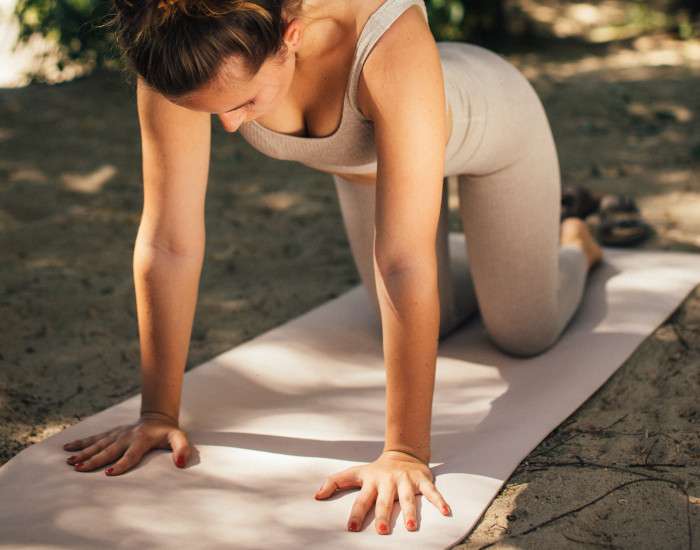
To work through the Cat-Cow Pose:
- Start on your hands and knees in a tabletop position.
- Inhale, arch your back, and lift your head (Cow Pose).
- Exhale, round your back, and tuck your chin (Cat Pose).
- Repeat this flowing motion, syncing it with your breath.
6. Standing Forward Bend (Uttanasana)
If you’re looking for yoga poses for beginners that stretch your hamstrings, calves, and back, consider learning Uttanasana, which is often referred to as the Standing Forward Bend. This pose essentially encourages you to fold yourself in half. It’s a great way to relieve tension in your spine or neck while also strengthening your legs and core muscles. If you have back problems, you can simply bend your knees to make the pose easier for you.
To work your body into Uttanasana, simply:
- Stand with feet hip-width apart.
- Inhale, lift your arms overhead.
- Exhale, hinge at your hips, and fold forward.
- Reach for your toes or shins, keeping your back straight.
7. Mountain Pose (Tadasana)
Mountain Pose is another yoga pose for beginners that improves posture and spinal alignment. Moreover, it’s the perfect way to build core and leg strength without doing things you hate (like crunches). As you’ll see in the steps below, Tadasana engages all of your major muscle groups, making it the perfect part of a daily yoga routine meant to stretch all parts of you.

Here’s how you can perfect the Mountain Pose:
- Stand with your feet together, heels slightly apart.
- Keep your spine straight, arms relaxed at your sides.
- Engage your core and focus on your breath.
8. Tree Pose (Vrksasana)
Although Tree Pose isn’t the easiest pose to master, it’s still a great beginner yoga stretch that can push you to new heights. This pose is great for those working on their balance, stability, or ability to focus. It also is a nice way to stretch your hips and inner thighs while also forcing your core to work hard.
To perform Vrksasana:
- Stand in Mountain Pose.
- Shift your weight to one foot and lift the other.
- Place the sole of your foot on your inner calf or thigh. Avoid placing the foot against the knee joint, though.
- Balance, engage your core, and bring your hands to your heart center.
9. Warrior I (Virabhadrasana I)
Even if you know nothing about yoga poses, chances are you’ve at least heard others mention Warrior I. It is not only part of most beginner yoga instructional methods, but it’s a standard pose that many yogis utilize on a daily basis because it strengthens both the body and the mind. In fact, many people believe that performing Warrior I regularly can boost your confidence.
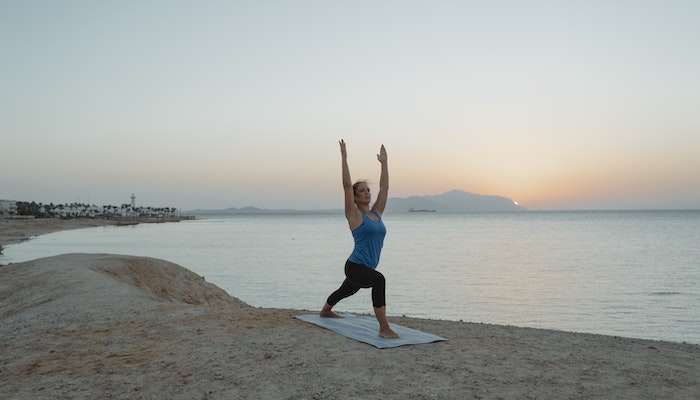
To get into Warrior I, simply:
- Begin in Mountain Pose.
- Step one foot back, keeping the back foot at a 45-degree angle.
- Bend the front knee at a 90-degree angle.
- Reach your arms overhead, palms facing each other.
10. Warrior II (Virabhadrasana II)
Warrior II, or Virabhadrasana II, isn’t as closely related to Warrior I as their names may imply. Instead, each Warrior pose targets a different part of your body. In this case, the Warrior II pose focuses on your hips, thighs, and buttocks. It’s also a great pose for improving one’s stamina
To perform Warrior II:
- Start in Mountain Pose.
- Step one foot back, keeping the back foot parallel to the mat.
- Extend your arms parallel to the floor, palms down.
- Gaze over the front hand.
11. Triangle Pose (Utthita Trikonasana)
As the name implies, Triangle Pose is a way of stretching your body in a way that creates three triangles with various parts. It’s a great pose for improving your balance and posture, plus it stretches and strengthens multiple parts of your body, such as the legs, core, hamstrings, hips, and spine. However, this pose can harm your lower back if performed incorrectly, so use caution when trying it for the first time.
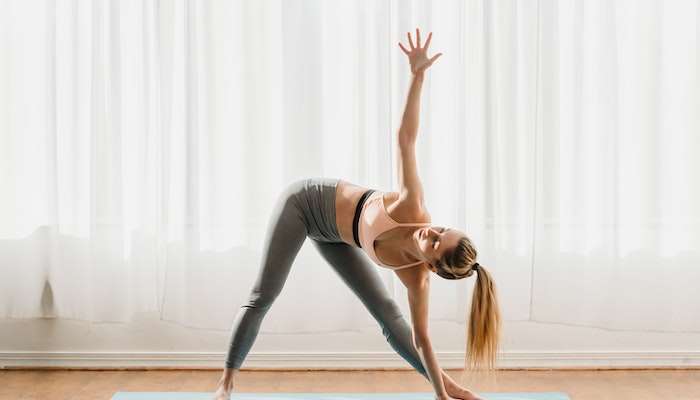
For Triangle Pose, you will need to:
- Stand with legs wide apart.
- Turn one foot out 90 degrees and the other foot slightly in.
- Extend your arms parallel to the floor.
- Reach your front hand down to your shin, ankle, or the floor, and extend the other arm toward the ceiling.
12. Cobra Pose (Bhujangasana)
Cobra Pose is one of the few backbend yoga poses for beginners. Unlike more intense backbends, this one provides support while relieving back pain and fatigue. It’s a great way to stretch your chest and shoulders, strengthen your back muscles and spine, plus work on your chest and abdominal muscles. However, those with back injuries should not try the cobra pose.
To position yourself in this yoga pose:
- Lie face down with your palms under your shoulders.
- Inhale, press through your hands, and lift your chest off the floor.
- Keep your elbows slightly bent and your shoulders relaxed.
Yoga Cares for Your Body and Mind
Many people love yoga because it encourages exercise while also promoting relaxation and mindfulness. Yoga can boost your mood in the morning or help you unwind after a stressful day. Just remember to start with the basics until you build strength and dexterity.
Image credit: Pexels
